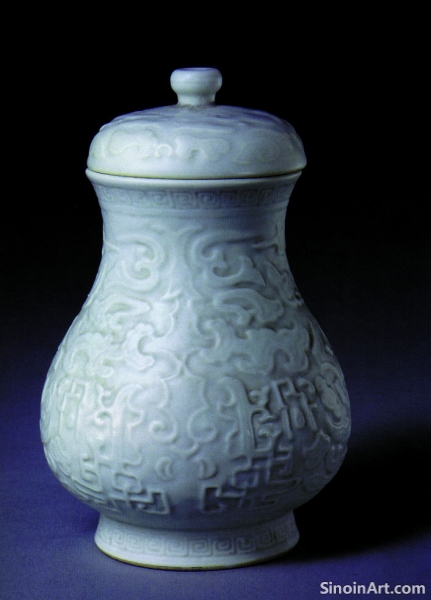Song Dynasty Ceramics and the Tea Ceremony
|
The Song Dynasty saw the flourishing of tea culture, and ceramics played a central role in the rituals and practices surrounding tea consumption. Specific types of tea bowls, teapots, and other tea wares were developed to enhance the tea-drinking experience. The ritualistic elements of tea consumption made the ceramic pieces important elements of daily life in the Song period.  Jian ware tea bowls, with their dark, heat-retentive glazes, were particularly prized for their ability to highlight the color and texture of the frothy whisked tea that was common at the time. The dark tones made the lighter colours of the tea stand out and provided an ideal canvas for the experience of drinking tea.  Other types of tea wares, such as small dishes for tea cakes and ewers for pouring hot water, were also produced in a variety of forms and styles. The production of specialized tea wares shows how important tea was in Song society.  The forms and styles of Song tea wares reflect the aesthetic values of the period, emphasizing simplicity, elegance, and a connection to the natural world. The pieces were both functional and pleasing to the eye. The continued popularity of Song tea wares demonstrates their enduring influence on tea culture and their role in shaping the modern appreciation for the art of tea drinking. The surviving pieces continue to inspire even today. |
Tag : Song tea ceremony, Chinese tea bowls, Jian ware tea, ancient teaware, tea culture ceramics
Related information
- The Delicate Beauty of Ru Ware Porcelain
- The Role of the Kilns in Song Ceramic Innovation
- Jun Ware: A Splash of Color in the Song Dynasty
- Collecting and Appreciating Song Ceramics Today
- The Refinement of Song Ceramics: An Introduction
Ru ware, produced for a short period during the late Northern Song Dynasty, is among the rarest and most highly valued of all Chinese ceramics. Known for their delicate bluish-green celadon glaze, often described as the color of "sky after rain," Ru ware pieces are celebrated for their understated elegance, simple forms, and subtle crackle patterns. They are highly sought after by collectors and admired for their timeless beauty.
Song Dynasty kilns, such as those in Longquan, Ding, Jun, and Jian, were centers of experimentation and artistic innovation, advancing kiln technology, glaze effects, and the training of potters, leading to a diversity of high-quality ceramic styles.
Jun ware, produced in kilns in Henan province, is distinguished by its vibrant, opalescent glazes, which range in color from sky blue to lavender, crimson, and even deep purple. Unlike the more restrained celadons and monochromes of the Song Dynasty, Jun ware is known for its dramatic splashes of color and bold, expressive forms. The vibrant colour palette makes them stand out from the more muted forms of Song Dynasty pottery.
Song Dynasty ceramics are highly valued today by collectors and museums due to their historical significance, artistic beauty, and technical sophistication, requiring detailed knowledge for informed collection, appreciation, and authentication.
Song Dynasty ceramics (960-1279) represent a golden age of Chinese pottery, marked by refined techniques, elegant forms, and a focus on monochrome glazes like celadon, showcasing subtle beauty and technical mastery.